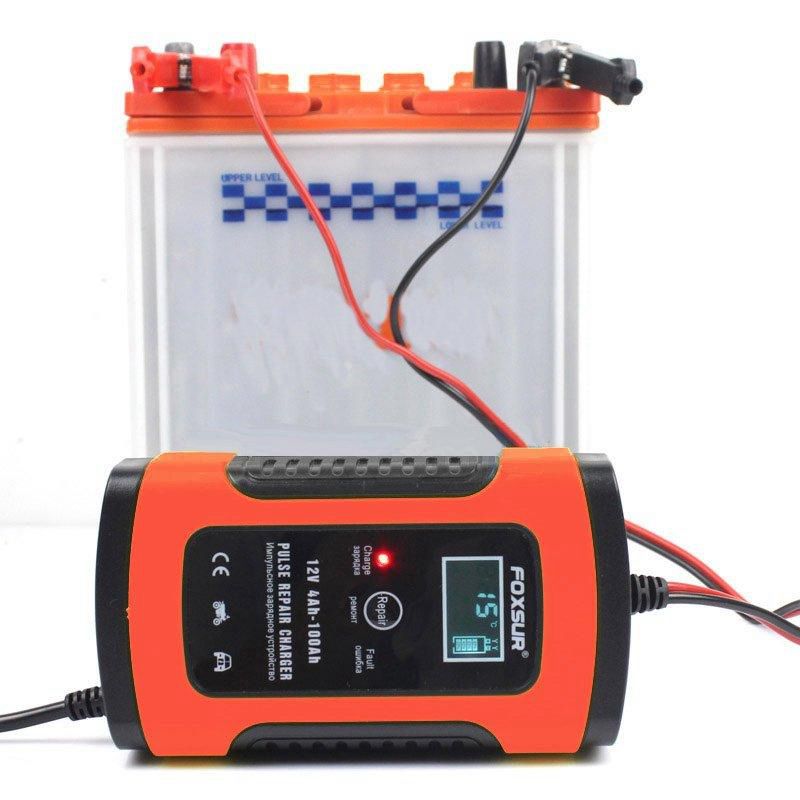


- #12V BATTERY PULSE CHARGER FULL#
- #12V BATTERY PULSE CHARGER SERIES#
- #12V BATTERY PULSE CHARGER FREE#
Feel free to share on facebook and interact with us either here in the comments or on our facebook page.The AIMTOM battery charger suits both 12V and smaller 6V batteries so it’s handy if you’re needing a charger for a car and a smaller voltage battery in say a motorbike, boat, lawnmower etc. We also discuss how these above chargers are to be used correctly and safely. Thank you for reading our introduction to types of battery chargers we will follow up on more information on all the various kinds of batteries you may encounter. There is no significant evidence, however, that negative pulse charging is more effective than ordinary pulse charging. Such chargers use both positive and brief negative current pulses. Some chargers use “negative pulse charging”, also called “reflex charging” or “burp charging”. Some chargers use pulses to check the current battery state when the charger is first connected, then use constant current charging during fast charging, then use pulse charging as a kind of trickle charging to maintain the charge. In a Lead–acid battery, this breaks down lead-sulfate crystals, thus greatly extending the battery service life. With pulse charging, high instantaneous voltages can be applied without overheating the battery. This technology is said to work with any size, voltage, capacity or chemistry of batteries, including automotive and valve-regulated batteries. The DC pulses have a strictly controlled rise time, pulse width, pulse repetition rate (frequency) and amplitude.
#12V BATTERY PULSE CHARGER SERIES#
Some chargers use pulse technology in which a series of voltage or current pulses are fed to the battery.
#12V BATTERY PULSE CHARGER FULL#
However, many so-called intelligent chargers employ a combination of cut off systems, which are intended to prevent overcharging in the vast majority of cases.Ī typical intelligent charger fast-charges a battery up to about 85% of its maximum capacity in less than an hour, then switches to trickle charging, which takes several hours to top off the battery to its full capacity. Overcharging of the batteries will result in some cases. This can cause even an intelligent battery charger to not sense that the batteries are actually already fully charged, and continue charging. The problem is, the magnitude of “delta-V” can become very small or even non-existent if (very) high capacity rechargeable batteries are recharged. Such chargers are often labeled as a ΔV, “delta-V,” or sometimes “delta peak”, charger, indicating that they monitor the voltage change. After that, the voltage decreases, which indicates to an intelligent charger that the battery is fully charged. An intelligent charger may monitor the battery’s voltage, temperature or time under charge to determine the optimum charge current and to terminate charging.įor Ni-Cd and NiMH batteries, the voltage across the battery increases slowly during the charging process, until the battery is fully charged. The output current of a smart charger depends upon the battery’s state. “dumb” batteries, which lack any internal electronic circuitry.Some smart chargers are designed to charge: A smart charger is defined as a charger that can respond to the condition of a battery, and modify its charging actions accordingly. A smart battery generally requires a smart charger it can communicate with (see Smart Battery Data). A smart battery is generally defined as one containing some sort of electronic device or “chip” that can communicate with a smart charger about battery characteristics and condition. As long as the ripple current is not excessive (more than 3 to 4 times the battery manufacturer-recommended level), the expected life of a ripple-charged VRLA battery will be within 3% of the life of a constant DC-charged battery.Ī “smart charger” should not be confused with a “smart battery”. The maximum ripple current for a typical 12 V 100 Ah VRLA lead-acid battery is 5 amps. Generally, when the ripple current is within a battery’s manufacturer recommended level, the ripple voltage will also be well within the recommended level. Simple AC-powered battery chargers usually have much higher ripple current and ripple voltage than other kinds of battery chargers because they are inexpensively designed and built. These chargers also vary in that they can supply either a constant voltage or a constant current, to the battery. Even so, many batteries left on a simple charger for too long will be weakened or destroyed due to over-charging. Typically, a carefully designed simple charger takes longer to charge a battery because it is set to use a lower charging rate to prevent damage. This simplicity means that a simple charger is inexpensive, but there are tradeoffs. A simple charger typically does not alter its output based on charging time or the charge on the battery. A simple charger works by supplying a constant DC or pulsed DC power source to a battery being charged.


 0 kommentar(er)
0 kommentar(er)
